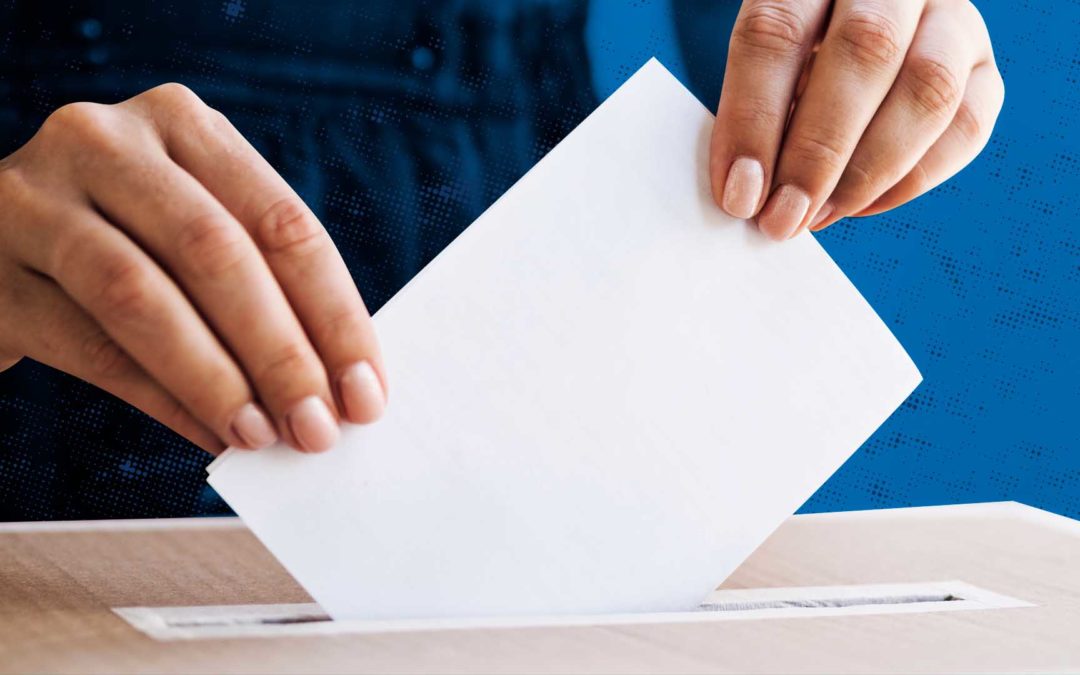You may not know it, but your earliest polling experience occurred in elementary school. Remember lunchtime, when the lunch attendant would ask you if you wanted chocolate milk or regular milk? Your responses and consumption would give the food manager a good idea of the variation of milk they should order.
Polling has been around since before your earliest experience deciding on the flavor of milk. Public opinion polls have been around at least since the early nineteenth century. One of the earliest examples of a political public opinion poll measured presidential preference in the town of Harrisburg, Pennsylvania between Andrew Jackson and John Quincy Adams. During this era, polling was typically conducted informally in the form of a straw poll. The name straw poll refers to the use of a straw to tally individual votes. More sophisticated public opinion polls were developed around the turn of the twentieth century. *
Considering that we are in the midst of election season, benchmark, tracking polls, and brushfire polls are typically used by political campaigns to gauge interest in a candidate’s office bid, the success of his/her messaging, and his/her weekly standing. Tracking and opinion polls may also be used by news organizations to inform their own reports of the campaign.
- Benchmark/Baseline Poll – Is generally the first poll taken in a campaign. It is often taken before a candidate announces his or her bid for office, but sometimes it occurs immediately following the announcement, allowing some opportunity to raise funds. This poll is generally a short and simple survey of likely voters.
- Tracking Poll – A tracking poll is a poll that is repeated periodically with the same group of people to check and measure changes of opinion or knowledge.
- Brushfire Poll – Are taken during the period between the benchmark and tracking polls. They gauge voter sentiment. The number of brushfire polls taken by a campaign is determined by how competitive the race is and how much money the campaign has to spend. These polls usually focus on likely voters.
- Entrance Poll – An entrance poll is taken directly before a voter casts their vote. The problem with this is that a voter may change his/her mind once they get in the voting booth.
- Exit Poll – An exit poll is taken immediately after the voters have exited the polling stations. Pollsters conduct exit polls to gain an early indication as to how an election has turned out.
- Opinion Poll – Is a survey of public opinion from a particular sample. Opinion polls are usually designed to represent the opinions of a population by asking a series of questions.
- Deliberative Opinion Poll – Is a form of an opinion poll that uses a statistically representative sample of a community to discuss an issue. The group is then polled, both the results of the poll and discussion can be used. A large enough sampling group will provide a relatively accurate representation of public opinion.
- A Push Poll – Is an interactive marketing technique, most employed during political campaigning, in which an individual or organization attempts to influence the view of respondents under the guise of conducting a poll. In a push poll, large numbers of respondents are contacted. In all such polls, the pollster asks leading or suggestive questions that “push” the interviewee towards adopting an unfavorable response towards the political candidate.
There are challenges to accurately measuring public opinion. Whichever poll is used, in order to conduct a poll effectively you must identify and contact sampled individuals and collect data from those who may not be easy to reach and evaluate and test poll questions, select the mode for posing questions, collect responses, train, and supervise interviewers. Polling isn’t so bad, it’s never a bad idea to get as much information as possible about how the public feels on important issues.
*Source: Concept Version 6 Created by BoundlessBoundless.com
